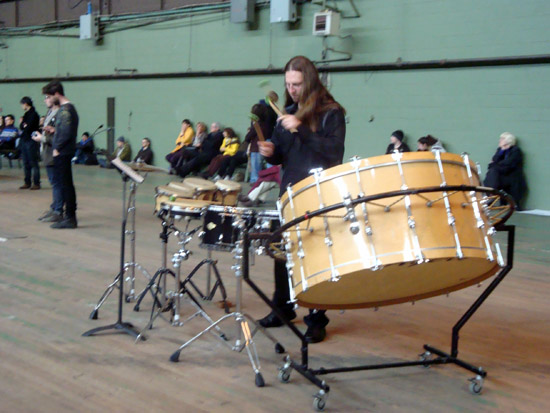
Photos: Gabriella Radujko
In an extraordinary performance of “Inuksuit” at the Park Avenue Armory in New York, composer John Luther Adams turned noise into “site-determined” music. Describing the Armory as an environment like no other, Adams accepted the challenge of scaling a performance, which originally premiered outdoors at the Banff Centre in the Canadian Rockies, for the “pristine emptiness” of the 55,000 square foot Wade Thompson Drill Hall.

Musicians commenced by playing simple instruments, some made of paper or wood, sensitizing the ears of the audience as sandpaper discs were rubbed, conch shells and megaphones blown, whirly tubes twisted, and bullroarers whipped. In sharp contrast to the stationary stone sentinels scattered throughout the Arctic, which are believed to have been used for navigation and for which the work is named, the audience, unencumbered with fixed seating, was free to walk, sit, or lie on the hardwood floor. Exhibiting interest in the musicians, their eyes tracked them as they slowly walked, instruments in hand, from the hall’s center to hallways and staircases of the first and second floors.
Over 70 percussionists, similarly scattered throughout the Armory, advanced the performance with thunderous noise – frighteningly strident at times; beating multi-tiered cymbals, tom-toms and tam-tams with increasing intensity, sound rising into the balloon shed, musicians engulfed by an ever moving audience that listened, looked, and learned kinesthetically.
A softened light via clerestories synchronized an approaching dusk with piccolos, glockenspiels and triangles, twinkling as they summoned night. Anticipation of the end of yet another day grew as did recognition of transformation. Adams had not only found the music “in the armory” but the spirit of communitas as well.

 RSS
RSS
